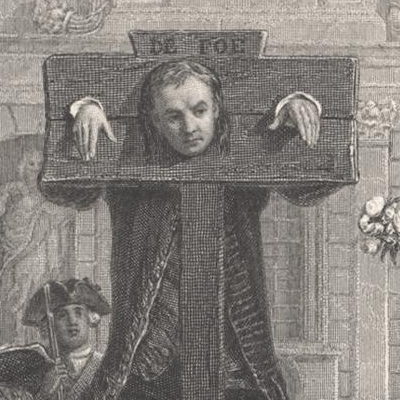The British Literary Review asked me to review two books, one by Simon Armitage, one by Iain Sinclair. Which I did, and it hasn't appeared yet so I guess it's been spiked. Not that they'd told me anything, nor mentioned a kill fee. So here it is anyway:
Simon Armitage, Walking Away
Some of us find it remarkably difficult simply to go for a walk. We need an excuse, a project, a literary
precedent. We don’t want our wanderings,
or our accounts of them, to be simply strolls in the park. And so in these two
volumes by Iain Sinclair and Simon Armitage, both great walkers, and writers of
prose and poetry, they set about making life hard for themselves as they walk.
Sinclair, the Welsh-born, Dublin-educated Londoner, undertakes
a one-day 35 mile walk around the territory now served by London’s Ginger Line
– a circuit of overground railway that casts a loop of economic revival and
(that dirtiest of words) gentrification around the capital. He walks with the filmmaker Andrew Kotting, a
thoroughly Sinclairian character, “the darkness inside (him) is a form of
tremendous energy; stray humans encountered on our walk are buffeted, pitched
against fences, left breathless in his wake.”
Meanwhile, Simon Armitage - Yorkshireman, geographer,
former probation officer - walks along a section of the South West Coast Path
through Somerset, Devon and Cornwall, about 250 miles in three weeks. The book is a kind of sequel to Walking Home, his account of hiking the
Pennine Way, for which he used the same modus operandi, playing the troubadour:
a daily walk of up to 15 miles, then in the evening a poetry reading and a reliance
on the kindness of strangers to give him a night in a borrowed bed.
Although Armitage sometimes walks alone, more
generally he finds walking companions, most of them strangers he meets along
the way, though one or two are friends and acquaintances, pop up from time to
time, and an old mucker who rejoices in the name of Slug, “an exotic and
unknowable creature whose actions I can never predict.” Personally I think there’d be some fine
entertainment in seeing Kotting and Slug hit the road together. Whether Sinclair and Armitage would be
sympathetic walking companions I’m not so sure.
In some ways Sinclair’s
book feels like business as usual – another of his London-based walking
expeditions - but it’s well worth remembering just how strange and unfamiliar
Iain Sinclair’s London once seemed, the city described in a baroque literary
style, with an unlikely range of references that began with Bunyan, Defoe and Blake,
and ran through to Burroughs and Ballard.
These iconic figures have now been incorporated into the mythology of
anyone who walks the streets of London and calls himself a psychogeographer. On this latest outing Sinclair also focuses
on, among others, Angela Carter, Freud and Bob Carlos Clarke. It’s easy enough to detect something
alchemical in all this, the contestant working and reworking of similar
ingredients in different quantities and combinations. Those of us who are Sinclair fans certainly
think base materials are regularly transmuted into something more noble.
Armitage’s account is an
easier read and he’s certainly a gentler, if no less acute, observer. His evocations of the spare bedrooms he stays
in are no less telling than his descriptions of landscape. He also seems to be a man to whom amusing
things happen. A woman in the audience
at one of his readings announces that she once met a poet in Canada. Armitage says. “It might have been me – I’ve
been to Canada.” The woman replies, "No, I slept with him, so I would have
remembered." I can’t imagine this
has ever happened at a Sinclair reading, though I may be wrong.
On the other hand Armitage sometimes mentions in
passing a figure you’d like to know more about, say William Stukely, the
eighteenth century author of Itinerarium
Curiosum, a self-styled authority on Stonehenge, and a man who theorized
that the centre of the earth was made of water (p125), and you know that
Sinclair would have given a half a chapter to the guy.
Both writers have a story to tell, a journey to
describe, but they’re also poets who make language strut and march to their own
needs and purposes. Here’s Armitage
encountering damp cobwebs in the woods, “they are delicate cats’ cradles strung
between oak trunks, some precious and golden where sunlight breaches the canopy
and falls across the fine threads and intricate dew-jewelled designs.” (p
107) Compare and contrast with
Sinclair’s description of tropical fish “Zen blobs of non-being, barely
materialized wafers of cosmic drift matter.” (p15) Armitage feels like your
poetic best mate, Sinclair remains your weird, raffish, poetical uncle.
And of course both writers suffer for their art, which
is exactly as we want it to be. One of
the greatest pleasures of any kind of travel writing is that the authors suffer
on our behalf. By the end Armitage who has suffered with bad hips
and a bad back along the way declares, “I won’t be doing any more long walks.” Sinclair is evidently made of sterner stuff, by no means pain-free but enduring
“as we puffed and panted up the tragic dunes of ages and alienation.” It may be worth noting that Sinclair is some twenty
years older than Armitage.
There’s a tendency, when reading these two books in tandem,
as I’ve just done, to become a champion for one style of walking and writing at
the expense of the other, but it strikes me there’s no need to make such a choice. There are as many ways of walking and writing
as there are walkers and writers. We
should be content to go at least some distance down the road with all of them.


















